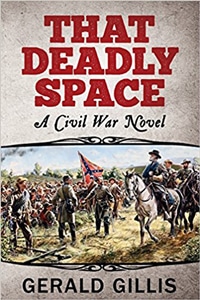In researching certain particulars of the Battle of Gettysburg for my new novel, That Deadly Space, I came across a familiar figure who might very well have been the most consequential Union officer on the field during those historic three days in July, 1863. General Winfield Scott Hancock was that familiar figure. A battle-tested veteran of Antietam, Fredericksburg, and Chancellorsville, Hancock’s performance had earlier been described by General George McClellan as “superb.”
On the first day at Gettysburg, Hancock assumed temporary command of the Union I, II, III and XI Corps after General John Reynolds had been killed in action. While in command of the entire left wing of the Army of the Potomac, Hancock provided critically needed leadership while skillfully deploying his troops along the high ground at Cemetery Hill. He set in motion the “fishhook” position that spanned from Culp’s and Cemetery Hills to the Round Tops, and then recommended to the overall commander, General George Meade, that the fight should be made on the excellent defensive ground at Gettysburg.
On the third day, Hancock’s II Corps absorbed the brunt of the massive Confederate assault known as Pickett’s Charge. Hancock’s courageous personal example, even under heavy artillery fire, was inspirational to his soldiers. Again and again, Hancock was superb. When told by a subordinate that he was risking his life by calmly riding among his troops, Hancock was said to have replied, “There are times when a corps commander’s life does not count.” Hancock’s leadership did much to gain the Union victory, but not without cost. Hancock was seriously wounded in the thigh and refused to be evacuated from the field until the battle had been decided. He would be bothered by that wound for the duration of the war. In a strange twist of fate, Confederate General Lewis Armistead, a dear friend, was also wounded in the assault and died two days later. The two close friends, on opposite sides of that deadly struggle, were less than one-hundred yards apart when both were struck down.
The statue of the mounted Hancock at Cemetery Hill is impressive, all the more when the thoughts of Hancock’s uplifting presence among the dispirited Union troops on that hard first day are remembered. A marker also shows the location where Hancock was wounded on the third day. His presence can still be felt on the field at Gettysburg, even with the passage of 154 years. Winfield Scott Hancock is unquestionably one of the finest military officers this nation has produced.
He was, and still is, Hancock the Superb.



